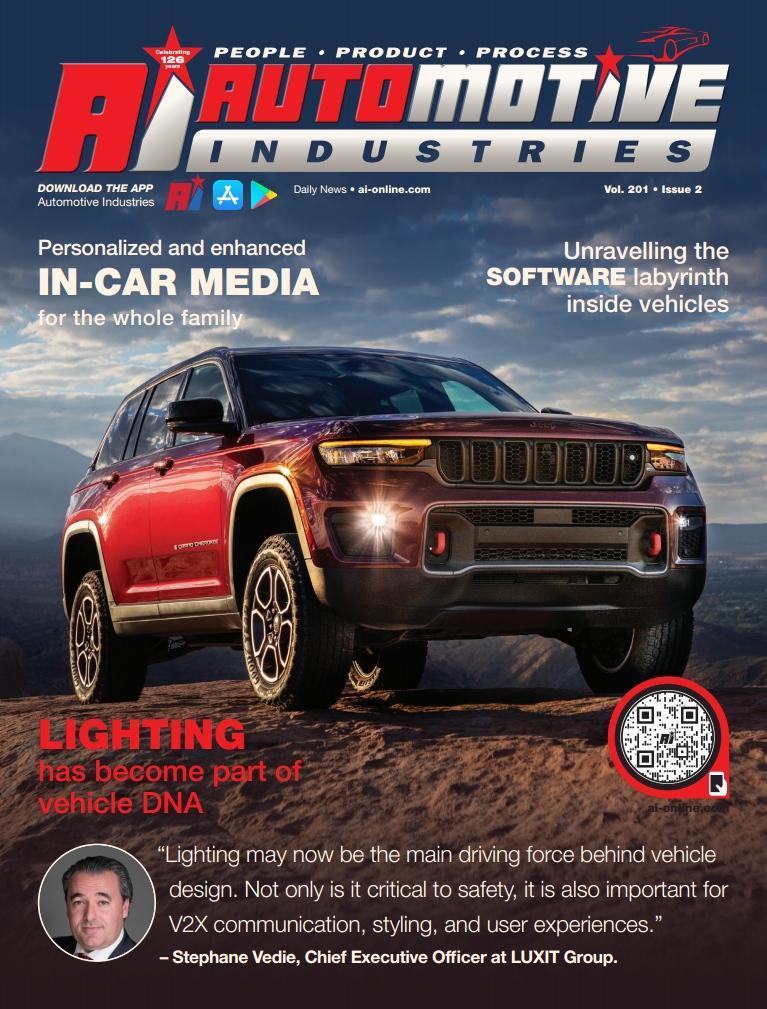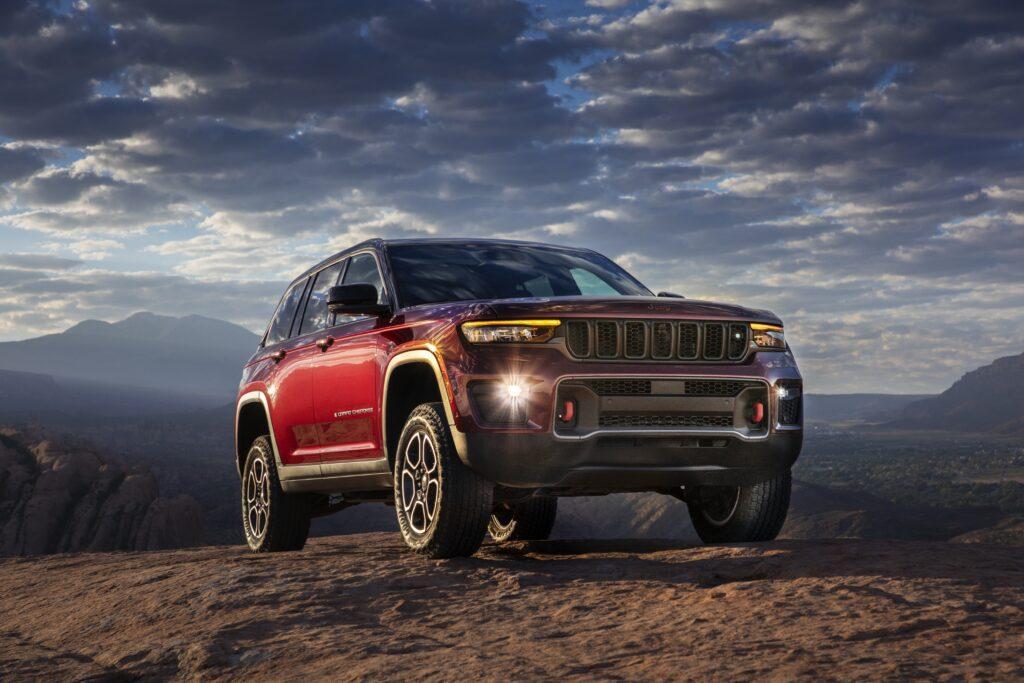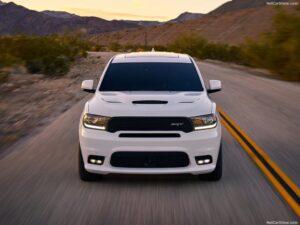
Customers expect automotive lighting to do more than simply light the way or provide in-cabin illumination when needed.
The value of global automotive lighting market is expected to grow from US$11.96 billion in 2021 to US$25.77 billion in 2022, and to reach US$39.03 billion in 2026 at a CAGR of 10.9%. That is according to the Automotive Lighting Global Market Report 2022 published by the Business Research Company.
It says the demand for safety features along with the adaptive lighting system has increased due to an increase in the number of road accidents worldwide. Vehicles with adaptive and advanced lighting can provide optimum road illumination and detect objects on the road, thereby enabling the driver to take appropriate actions.
TrendForce’s “2022 Global Automotive LED Product Trend and Regional Market Analysis” report predicts that there will be greater use of LED headlights coupled with the development of advanced technologies such as intelligent headlights, logo lamps, and intelligent ambient lights.
According to TrendForce, the global penetration rate of LED headlights in passenger cars reached 60% 2021.The penetration rate of LED headlights in electric vehicles was as high as 90%, and the penetration rate in

conventional and electric vehicles is expected to increase to 72% and 92%, respectively, in 2022.
Mordor Intelligence research found that vehicle manufacturers are showing great interest in integrating LED lights in vehicles, as these lights consume less power and have a longer life when compared to halogen and HID lights. Furthermore, LED lights offer durability and strength, have high-quality light-emitting diodes, and are superior to all other forms of lighting technology.
One of the main drivers of research and development in automotive smart lighting is the adoption and growing sales of electric vehicles. LED lighting, due to its lower power consumption than conventional globes, helps to extend the range of electric vehicles. They also permit the inclusion of advanced features in existing facelifted and future vehicles.
Automotive manufacturers are developing new lighting technologies and are focusing on the major lighting components, such as headlights. They are entering into partnerships to be ahead in the competition within the market, according to Mordor Intelligence.
Automotive Industries (AI) asked Stephane Vedie, Chief Executive Officer of the LUXIT Group, what role lighting is now playing in the design of vehicles.
Vedie: If I may be a little provocative, I would say that lighting may now be the main driving force behind vehicle design. Not only is it critical to safety, it is also important for V2X communication, styling, and user experiences.
Welcome and farewell functions, BEV charge indicators, and on-road tell tail markings are quickly becoming the new norm.
With lighting playing an even greater role in the autonomous vehicle future, it is a great time to be a part of the lighting industry and contribute to the automotive megatrends.

AI: Where is the technology taking us – what opportunities are being created for designers to differentiate their vehicles?
Vedie: Lighting has been the “vehicle jewelry” for years, but now it is truly becoming a major part of the vehicle DNA.
Advances in light sources and optics are enabling designers to execute current trends such as exceedingly low profile light sources and “hidden until lit” features. Lit emblems, badges, and grilles enable the designers to provide additional brand recognition to the OEM.
AI: How does lighting support active safety enhancements, such as cameras, radar and lidar?
Vedie: When it comes to camera-based ADAS technology, lighting is a major contributor for systems to accurately detect and recognize objects. Adding light to various areas of the system can improve detection and reaction time that further mitigates crash avoidance.
Additionally, lamps provide the ability to integrate cameras, radar, and lidar to provide a fully integrated look without losing on the aesthetics that the vehicle design is trying to achieve.
AI: Are you seeing the in-shoring of supply for US manufacturers?
Vedie: With the recent supply chain issues that have strongly impacted the automotive industry, our customers are now requesting more localization in the United States with lamp production in close proximity to the OEM plant.
We currently have four plants in the United States and are in the process to acquire additional facilities.
We are able to maintain a competitive advantage in the United States by being the only supplier that is fully vertically integrated. We manufacture our own plastic injection, coating, metallization, die casting brackets and heatsinks, LED PBCA’s, and offer fully automated assemblies.
Automation and vertical integration are the keys to be competitive and produce in the United States.
AI: What is LUXIT’s technological edge?
Vedie: The ability to continuously design more efficient lighting solutions is our competitive edge. LUXIT invests heavily in top talent, software and equipment to maintain our edge. Our vertically integrated structure and continuously growing global footprint, with automated assembly plants, is a key advantage to introduce new technologies and design elements to our customers.
AI: Are you ramping up production capability to meet demand?
Vedie: Over the past 12 months we have won significant market share with both our Tier 1 and Tier 2 customers. We have been successful in launching new products in record time.
We see that the lighting content per vehicle increases from one generation to the next both for exterior, as well as interior lighting products.
In addition to the content increasing, the technology in the lighting is also increasing, which drives strong revenue growth. We have proven that we are fast, flexible, and competitive

This is why we are now the market leader in North America for small lamps and auxiliary lighting!
AI: What about quality?
Vedie: Quality is non-negotiable. Our customers expect 0 production claims and 0 warranty returns.
This is undoubtedly challenging, but is also achievable with rigorous training and follow through of our standards and processes. Quality is built in during the design of the product by our strong feasibility team and design for manufacturing process. Our leadership team brings extensive lighting experience with best practices from all of the major players in the industry.
AI: Where to go from here for LUXIT?
Vedie: For our Tier 1 customers, we are launching new products such as lit badges, lit grilles, and DLP projection lamps.
We are continuing to grow our interior business as well. Our momentum is great as we continue to grow our partnership with all major US car OEMs.
For our Tier 2 business, our customers continue to have strong demand. Not only are we delivering components to them, but now there is a need for more sub-assemblies and complete projector modules.
Our Tier 2 business is moving toward a Tier 1.5 business model.
Continuing to be the market leader in North America as well as driving technological improvements is our top priority.

More Stories
Acoustic sensor systems and Fraunhofer measurement technology for in practical testing ͏
OSI Systems Receives $10 Million Order for Cargo and Vehicle Inspection Systems
Mitsubishi Electric Automotive America Launches Guardian Generation 3 Trial with Seeing Machines in North America